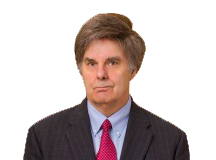A key antifraud provision in the federal securities laws makes it unlawful for any person to make a false or misleading statement of a material fact in connection with the purchase or sale of any security. The same provision more generally makes it unlawful to employ any “device, scheme or artifice to defraud,” or to “engage in any act, practice or course of business which operates or would operate as a fraud or deceit upon any person” in connection with the purchase or sale of a security. This is Rule 10b-5, adopted under the federal Securities Exchange Act of 1934, which is a predominate basis for not only enforcement actions by the U.S. Securities and Exchange Commission (SEC), but also
private actions brought by investors who suffer losses caused by Rule 10b-5-prohibited acts and conduct.
The scope of liability under Rule 10b-5 has occupied the attention of courts, particularly the U.S. Supreme Court, for years. Most recently, for example, the Supreme Court addressed the fundamental question of who “makes” a fraudulent statement for purposes of Rule 10b-5 liability. In 2011 the Court determined in Janus Capital Group, Inc. v. First Derivative Traders that liability for violation of Rule 10b-5 for making false or misleading statements of material facts necessarily extends only to the actual maker of the false or misleading statement, or to the person(s) with ultimate authority over it.
A much trickier question has been whether, and to what extent, antifraud liability under Rule 10b-5 may be imposed based on acts and conduct amounting to a “scheme” to defraud or which “operate” as a fraud or deceit when the conduct at issue centrally involves materially false or misleading statements, but the alleged violator is not, in fact, the “maker” of those statements. So-called “scheme” liability in actions under Rule 10b-5 has proved to be a genuine conundrum as lower federal courts directly, and the U.S. Supreme Court indirectly, have grappled with the question whether scheme liability should be recognized as a basis for primary liability under Rule 10b-5, where the focal
point is the dissemination of materially false or misleading information and the target violator is not the maker of those statements.
On December 3, 2018, the Supreme Court heard arguments in Lorenzo v. Securities and Exchange Commission, a case in which it is expected the Court will answer the question whether an individual may be held to have directly violated securities law antifraud provisions for engaging in a fraudulent “scheme” that centrally involved communication of materially false or misleading statements to potential investors that the individual himself did not make. Frank Lorenzo was employed as the director of investment banking at a securities firm engaged as exclusive placement agent for a securities offering by a company on the verge of financial
ruin. His boss, the owner of the securities firm, directed Lorenzo to email certain specific information about the pending securities offering to two potential investors. Lorenzo’s boss provided him with the content of the emails, which Lorenzo sent to the potential investors specifically “at the request” of his boss. The statements in the emails were materially false or misleading. Although Lorenzo knew the statements were false or misleading at the time he sent the two emails, it was undisputed that the statements were not his – he did not “make” them. He merely sent the two emails at the direction of his boss.
The SEC brought an administrative enforcement action against Lorenzo for violation of Rule 10b-5. An Administrative Law Judge, affirmed by the SEC itself,
concluded that Lorenzo violated Rule 10b-5 by sending out the emails, albeit at the direction of his boss who actually “made” the misstatements. Lorenzo was severely sanctioned, with money penalties and a lifetime bar from the securities industry. He appealed to the U.S. Court of Appeals for the D.C. Circuit, which upheld the SEC’s “scheme” liability theory. Lorenzo then successfully petitioned the U.S. Supreme Court to hear his appeal from that determination.
The Supreme Court must now deal with the viability of “scheme” liability under general antifraud provisions in the federal securities laws. In simplest terms, as framed by the dissenting U.S. Court of Appeals judge, Lorenzo’s case is that given Lorenzo did not make the false or misleading statements out of
which the case arose, whether he nonetheless willfully engaged in a scheme to defraud solely because of the statements made by his boss. The SEC argues that attempting to induce investments by sending a message falsely representing a company’s financial condition plainly constitutes a Rule 10b-5 prohibited “scheme.” The Supreme Court’s decision will most likely come in the first half of 2019.
Read the full article here.

Guest author Bob Rapp is a retired Partner, formerly with Calfee's Securities and Capital Markets Practice Group. He is a Visiting Assistant Professor of Law at the Case Western Reserve University School of Law, where he teaches courses in securities and financial market regulation and supervises international student doctoral level research and dissertation work. He is a frequent writer and presenter on capital markets regulatory issues; he most recently delivered the Louis C. Greenwood CWRU Law Lecture at the Cleveland City Club on “Digital Assets and Blockchain Technology: Assessing the Magnitude of Disruption in Securities and Capital Market Regulation” (Nov. 7, 2018).